Instruction
How eye dominance affects your golf swing
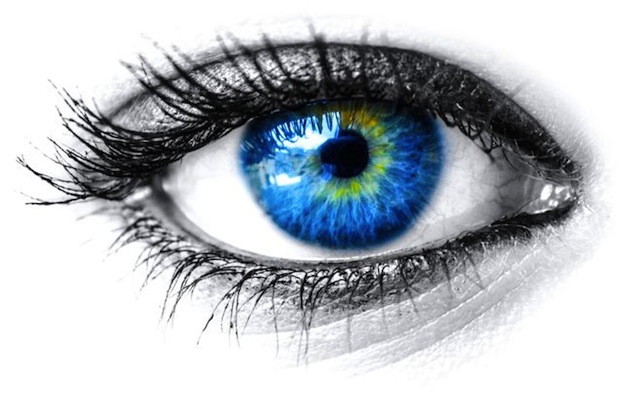
The influence your eyes and vision have on your golf game is obvious. They control depth perception, reading break on a green, planning your attack on a hole, avoiding trouble and many other tasks and obstacles.
I also believe there is a less obvious visual reaction, which takes place during the act of striking the golf ball and can have a huge effect on your body’s ability to turn. To correctly understand how your eyes effect the execution of your golf shot, you need to identify which eye is your dominant eye. Although most of us are fortunate enough to have two eyes, one eye is responsible for taking the reigns, or leading the second eye, in what you see.
I’ll take you through a quick test to help you acquire that information, and then share some thoughts about how eye dominance effects the golf swing.
A simple way to identify your dominant eye is to get ready to strike a golf ball. Then, close one eye at a time. If the golf ball noticeably moves when one eye is closed, your closed eye is your dominant eye.
There are varying degrees as to how much your eye dominance effects your technique. Like so many other characteristics in life, these observations do not always apply. There are no absolutes, but the following traits tend to be pronounced based upon your dominant eye.
Backswing Eye
If your backswing eye is your dominant eye (that’s the right eye for right-handed golfers), you have two primary body tendencies that affect your technique. You tend to have a shorter turn during your backswing and tend to be more open with your body at impact.
To have a simpler understanding of these characteristics, close your target eye during your golf swing. If you have a big nose, a big shoulder turn on your backswing or too upright of a posture, you will lose sight of the golf ball at a sooner point on your backswing than you would with your target eye. On the downswing, to have a better look at the object you are striking, your backswing eye wants to get those same offending body parts that were effecting your view on the backswing out of the way.
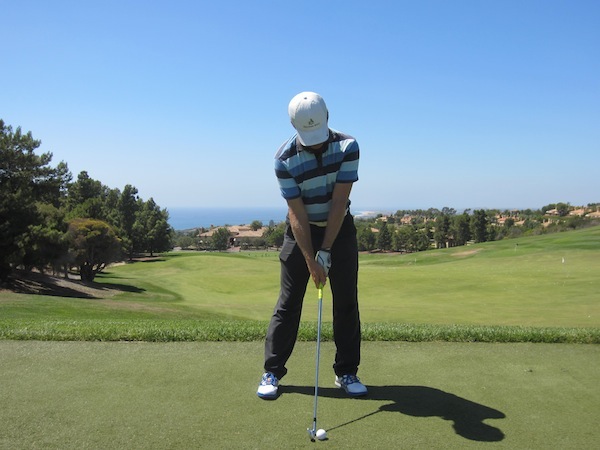
Address position for a backswing dominant eye (BDE) player.
Note a shorter backswing for this BDE player. His target shoulder is obstructing his view of the golf ball.
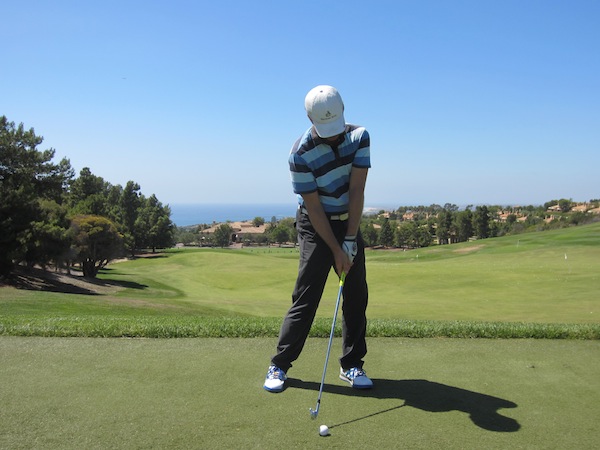
This BDE player’s chest is more open at impact compared with a Target Dominant Eye player. The trail shoulder does not obstruct his view of the golf ball.
Target Eye
If your target eye is your dominant eye, you have the exact opposite tendencies. Your body motion tends to produce a bigger turn on your back swing, and your body tends to unwind slower or later sequentially, on the downswing.
Again, to understand those tendencies, close your backswing eye during your golf swing. On your backswing, your turn can be less restricted, because your nose, shoulder and other body parts are less obtrusive in impeding your view of the golf ball as you swing your golf club backwards. On the downswing, your nose, shoulder and body tends to stay out of the way to give your target eye the best possible view of the golf ball as you strike it. Any one of those body parts will obstruct your view of the golf ball if you unwind too quickly during the downswing sequence.
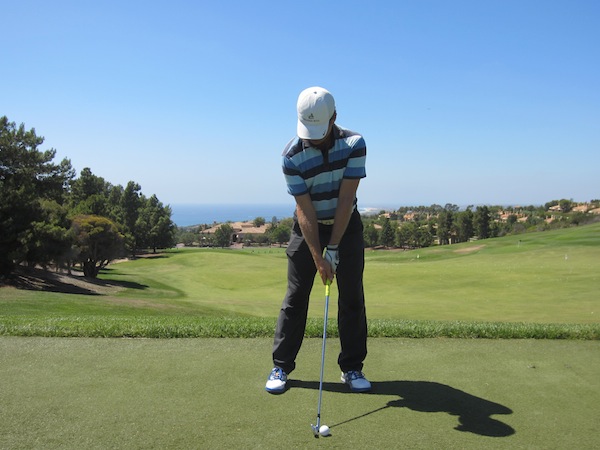
Address position for a Target Dominant Eye (TDE) player.
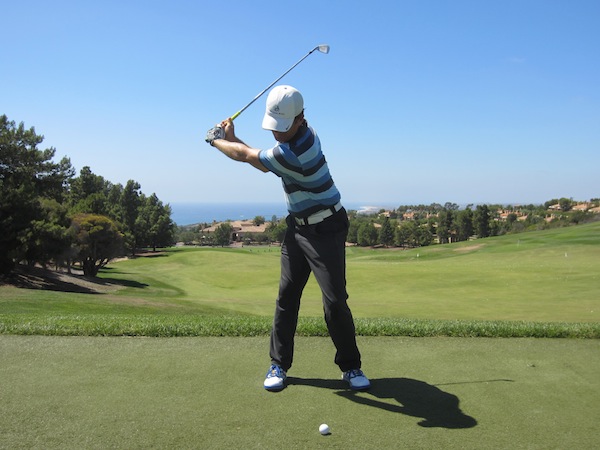
Note the bigger backswing for the TDE. The target shoulder does not obstruct this player’s view of the golf ball.

This TDE player’s chest is more closed at impact compared with a BDE player. The trail shoulder can obstruct his view of the golf ball.
If you have read one of my previous stories, you will know your body motion plays a huge role in your ability to return a club face to square consistently. Identifying your eye dominance might help you understand the tendencies of your body motion throughout your golf swing.
Both eye dominance characteristics produce world class golfers. Let’s discuss the two world class players in the photos below who have traits of extreme eye dominance patterns.
Former U.S. Open Champion Justin Rose has the traits of a target eye dominant player. He makes a larger turn away from the golf ball on his backswing. On the downswing, his trail shoulder is sequentially later than a backswing dominant eye player in passing the point of impact. Other examples include Lee Westwood, Dustin Johnson, Jack Nicklaus and Michelle Wie.
Former PGA Champion Jason Dufner has the mannerisms of a backswing eye dominant player. He makes a shorter turn away from the golf ball, due to his target shoulder getting in the way of his view of the golf ball. On the downswing, Dufner wants to get his target shoulder out of the way to give him a better view of the ball with his dominant eye as he strikes. Other examples include David Duval, Inbee Park and Annika Sorenstam. It is important for me to note that I do not know unequivocally the eye dominance patterns of the players listed above. These are educated guesses, based upon my research and the golfer’s movement patterns.
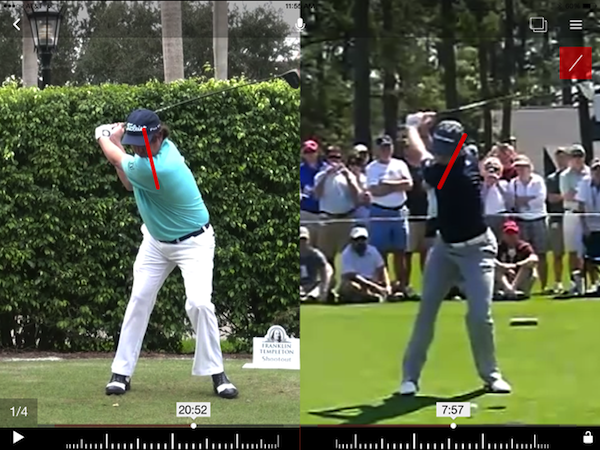
Note both players at the top of their backswing. Dufner’s target shoulder is restricting his view and backswing.
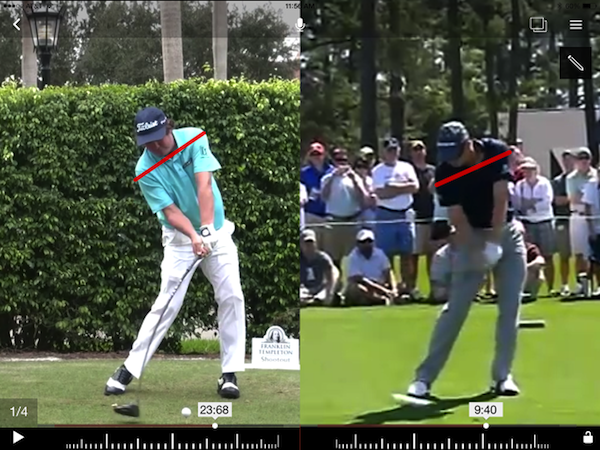
Note how Rose’s trail shoulder is lagging behind Dufner’s just prior to impact.
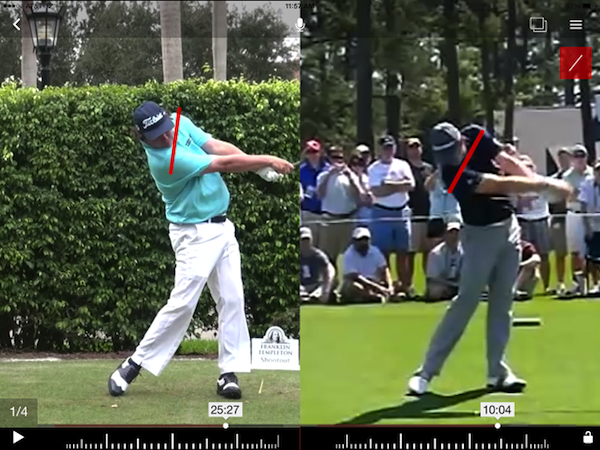
Note how Dufner’s chest is more open to the target than Rose’s when the trail arm is parallel to the ground.
This information can potentially help you understand your golf game better than ever before. We are all trying to find the best technique for our own individual needs, and your inherent vision just might be the last clue to help you achieve your golfing goals. Or, for beginners, it might be a wonderful place to start the task of building a game for a life time.
I would also like to thank @JimHPGA, a mentor to me both on and off the course for close to 20 years, for his help with writing this article.
- LIKE168
- LEGIT14
- WOW20
- LOL5
- IDHT0
- FLOP7
- OB0
- SHANK11
Instruction
The Wedge Guy: The easiest-to-learn golf basic

My golf learning began with this simple fact – if you don’t have a fundamentally sound hold on the golf club, it is practically impossible for your body to execute a fundamentally sound golf swing. I’m still a big believer that the golf swing is much easier to execute if you begin with the proper hold on the club.
As you might imagine, I come into contact with hundreds of golfers of all skill levels. And it is very rare to see a good player with a bad hold on the golf club. There are some exceptions, for sure, but they are very few and very far between, and they typically have beat so many balls with their poor grip that they’ve found a way to work around it.
The reality of biophysics is that the body moves only in certain ways – and the particulars of the way you hold the golf club can totally prevent a sound swing motion that allows the club to release properly through the impact zone. The wonderful thing is that anyone can learn how to put a fundamentally sound hold on the golf club, and you can practice it anywhere your hands are not otherwise engaged, like watching TV or just sitting and relaxing.
Whether you prefer an overlap, interlock or full-finger (not baseball!) grip on the club, the same fundamentals apply. Here are the major grip faults I see most often, in the order of the frequency:
Mis-aligned hands
By this I mean that the palms of the two hands are not parallel to each other. Too many golfers have a weak left hand and strong right, or vice versa. The easiest way to learn how to hold the club with your palms aligned properly is to grip a plain wooden ruler or yardstick. It forces the hands to align properly and shows you how that feels. If you grip and re-grip a yardstick several times, then grip a club, you’ll see that the learning curve is almost immediate.
The position of the grip in the upper/left hand
I also observe many golfers who have the butt of the grip too far into the heel pad of the upper hand (the left hand for right-handed players). It’s amazing how much easier it is to release the club through the ball if even 1/4-1/2″ of the butt is beyond the left heel pad. Try this yourself to see what I mean. Swing the club freely with just your left hand and notice the difference in its release from when you hold it at the end of the grip, versus gripping down even a half inch.
To help you really understand how this works, go to the range and hit shots with your five-iron gripped down a full inch to make the club the same length as your seven-iron. You will probably see an amazing shot shape difference, and likely not see as much distance loss as you would expect.
Too much lower (right) hand on the club
It seems like almost all golfers of 8-10 handicap or higher have the club too far into the palm of the lower hand, because that feels “good” if you are trying to control the path of the clubhead to the ball. But the golf swing is not an effort to hit at the ball – it is a swing of the club. The proper hold on the club has the grip underneath the pad at the base of the fingers. This will likely feel “weak” to you — like you cannot control the club like that. EXACTLY. You should not be trying to control the club with your lower/master hand.
Gripping too tightly
Nearly all golfers hold the club too tightly, which tenses up the forearms and prevents a proper release of the club through impact. In order for the club to move back and through properly, you must feel that the club is controlled by the last three fingers of the upper hand, and the middle two fingers of the lower hand. If you engage your thumbs and forefingers in “holding” the club, the result will almost always be a grip that is too tight. Try this for yourself. Hold the club in your upper hand only, and squeeze firmly with just the last three fingers, with the forefinger and thumb off the club entirely. You have good control, but your forearms are not tense. Then begin to squeeze down with your thumb and forefinger and observe the tensing of the entire forearm. This is the way we are made, so the key to preventing tenseness in the arms is to hold the club very lightly with the “pinchers” — the thumbs and forefingers.
So, those are what I believe are the four fundamentals of a good grip. Anyone can learn them in their home or office very quickly. There is no easier way to improve your ball striking consistency and add distance than giving more attention to the way you hold the golf club.
More from the Wedge Guy
- The Wedge Guy: Golf mastery begins with your wedge game
- The Wedge Guy: Why golf is 20 times harder than brain surgery
- The Wedge Guy: Musings on the golf ball rollback
- LIKE83
- LEGIT13
- WOW5
- LOL1
- IDHT0
- FLOP4
- OB1
- SHANK8
Instruction
Clement: Stop ripping off your swing with this drill!

Not the dreaded headcover under the armpit drill! As if your body is defective and can’t function by itself! Have you seen how incredible the human machine is with all the incredible feats of agility all kinds of athletes are accomplishing? You think your body is so defective (the good Lord is laughing his head off at you) that it needs a headcover tucked under the armpit so you can swing like T-Rex?
- LIKE0
- LEGIT2
- WOW2
- LOL0
- IDHT0
- FLOP0
- OB0
- SHANK2
Instruction
How a towel can fix your golf swing

This is a classic drill that has been used for decades. However, the world of marketed training aids has grown so much during that time that this simple practice has been virtually forgotten. Because why teach people how to play golf using everyday items when you can create and sell a product that reinforces the same thing? Nevertheless, I am here to give you helpful advice without running to the nearest Edwin Watts or adding something to your Amazon cart.
For the “scoring clubs,” having a solid connection between the arms and body during the swing, especially through impact, is paramount to creating long-lasting consistency. And keeping that connection throughout the swing helps rotate the shoulders more to generate more power to help you hit it farther. So, how does this drill work, and what will your game benefit from it? Well, let’s get into it.
Setup
You can use this for basic chip shots up to complete swings. I use this with every club in my bag, up to a 9 or 8-iron. It’s natural to create incrementally more separation between the arms and body as you progress up the set. So doing this with a high iron or a wood is not recommended.
While you set up to hit a ball, simply tuck the towel underneath both armpits. The length of the towel will determine how tight it will be across your chest but don’t make it so loose that it gets in the way of your vision. After both sides are tucked, make some focused swings, keeping both arms firmly connected to the body during the backswing and follow through. (Note: It’s normal to lose connection on your lead arm during your finishing pose.) When you’re ready, put a ball in the way of those swings and get to work.

Get a Better Shoulder Turn
Many of us struggle to have proper shoulder rotation in our golf swing, especially during long layoffs. Making a swing that is all arms and no shoulders is a surefire way to have less control with wedges and less distance with full swings. Notice how I can get in a similar-looking position in both 60° wedge photos. However, one is weak and uncontrollable, while the other is strong and connected. One allows me to use my larger muscles to create my swing, and one doesn’t. The follow-through is another critical point where having a good connection, as well as solid shoulder rotation, is a must. This drill is great for those who tend to have a “chicken wing” form in their lead arm, which happens when it becomes separated from the body through impact.
In full swings, getting your shoulders to rotate in your golf swing is a great way to reinforce proper weight distribution. If your swing is all arms, it’s much harder to get your weight to naturally shift to the inside part of your trail foot in the backswing. Sure, you could make the mistake of “sliding” to get weight on your back foot, but that doesn’t fix the issue. You must turn into your trial leg to generate power. Additionally, look at the difference in separation between my hands and my head in the 8-iron examples. The green picture has more separation and has my hands lower. This will help me lessen my angle of attack and make it easier to hit the inside part of the golf ball, rather than the over-the-top move that the other picture produces.


Stay Better Connected in the Backswing
When you don’t keep everything in your upper body working as one, getting to a good spot at the top of your swing is very hard to do. It would take impeccable timing along with great hand-eye coordination to hit quality shots with any sort of regularity if the arms are working separately from the body.
Notice in the red pictures of both my 60-degree wedge and 8-iron how high my hands are and the fact you can clearly see my shoulder through the gap in my arms. That has happened because the right arm, just above my elbow, has become totally disconnected from my body. That separation causes me to lift my hands as well as lose some of the extension in my left arm. This has been corrected in the green pictures by using this drill to reinforce that connection. It will also make you focus on keeping the lead arm close to your body as well. Because the moment either one loses that relationship, the towel falls.


Conclusion
I have been diligent this year in finding a few drills that target some of the issues that plague my golf game; either by simply forgetting fundamental things or by coming to terms with the faults that have bitten me my whole career. I have found that having a few drills to fall back on to reinforce certain feelings helps me find my game a little easier, and the “towel drill” is most definitely one of them.
- LIKE12
- LEGIT2
- WOW2
- LOL0
- IDHT0
- FLOP2
- OB0
- SHANK8
-

 19th Hole2 weeks ago
19th Hole2 weeks agoJohn Daly stuns fans into silence with brutal opening tee shot on PGA Tour Champions
-

 19th Hole6 days ago
19th Hole6 days agoThings got heated at the Houston Open between Tony Finau and Alejandro Tosti. Here’s why
-

 19th Hole3 days ago
19th Hole3 days agoReport: Tiger Woods has ‘eliminated sex’ in preparation for the 2024 Masters
-

 19th Hole2 weeks ago
19th Hole2 weeks ago2-time major champ announces shock retirement from the sport at age of 33
-

 19th Hole3 weeks ago
19th Hole3 weeks agoEdoardo Molinari reveals the latest PGA Tour golfer to turn down ‘good offer’ from LIV Golf
-

 19th Hole2 weeks ago
19th Hole2 weeks agoCharlie Woods finds it tough going on American Junior Golf Association debut
-

 19th Hole3 weeks ago
19th Hole3 weeks agoScottie Scheffler had an interesting response when asked how he ‘quiets the noise’ following Players victory
-

 19th Hole5 days ago
19th Hole5 days agoAddiction, spinal fusion, and scam artists – Everything Anthony Kim revealed in candid interview with David Feherty

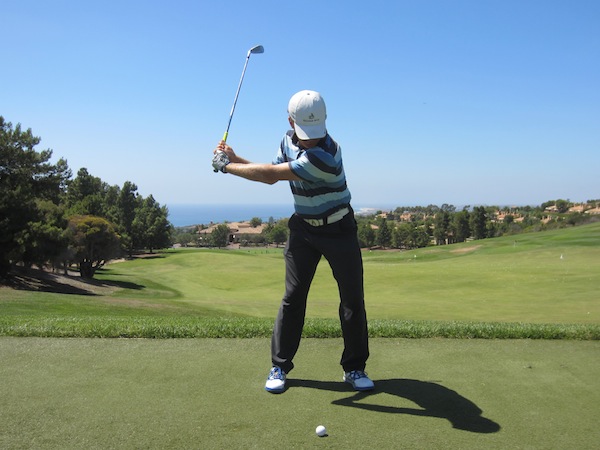










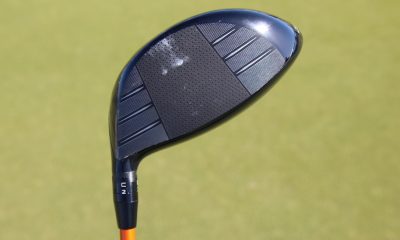







steve
May 14, 2017 at 1:52 pm
right eye dominant right hand golfer; great short game due to open stance, get beat up on driver because of squareness of setup, guess we should be hitting high fade off the tee
Jerry Bryan
May 21, 2016 at 6:34 pm
I am left eye dominant, right handed. The biggest detriment to this condition is putting. I have discovered I always line up to the left of the hole. I have a putter device that kicks the ball back to you when the ball goes in. I practiced with this for a long time on my carpet. If I stand behind the ball, and lay down a string parallel to the hole, then get in my set up position, the string looks way right of the target. I suspect I have this same alignment problem on all my shots.
Joey
Sep 21, 2018 at 5:46 am
Mike Malaska has a great drill for that on youtube, search for him and putting and you’ll find it. Basically he has a test to see how “off” you are. He puts a marker down on line between your ball and the hole, then covers it with his hand, then he asks you to line up, then he pulls his hand back and if you are OK it should still look straight — the student in the video said it looked like it was pointed left. He knows it’s straight but somehow his mind’s eye sees it left.
Mike
Jul 9, 2015 at 3:10 pm
I agree totally ive worked on setup for five years and still haven’t found a way been to instructors talk to good golfers, can’t repeat it but I’m right eye dominant and right handed, and for me to play good have to move ball up in stance because that’s what I’m seeing and my nose to pointing at. I cannot get my head and nose even with my body even as I type this my left eye isn’t even on the screen I’m so right sided its crazy even had a few instructors laugh said never seen nothing like it.
wineyax
Oct 3, 2014 at 2:22 pm
I am a right eye dominant player. I was not paying any special attention to this fact.
I recently started cocking my head to the right because I read somewhere that it was what many great players did. Since then I have been hitting more fat shots than usual. Very slightly fat, not by much. My driver has been hitting the ball more on the middle to lower section of the driver face too.
Whenever I would slack off and just setup without thought I would hit good iron shots and driver would hit from middle to upper section of the driver face (no head cock to the right).
I have a feeling that adjusting my setup to let my dominant eye see the ball more might be a cure for this… What do you think?
Saevel25
Sep 30, 2014 at 9:58 am
Sadly I am right eye dominant, a right handed golfer and I have a big shoulder turn and do not have my hips more open at impact. Sorry but I break your generalization. I would like to see actual numbers, maybe an actual large sample size study. To take two players and draw a generalization is a poor analysis.
I would note I am not convinced that set up can tell you if a person is right eye or left eye dominant. Unless you actually test them, that is a poor assumption.
Overall it is an interesting idea, but needs a lot more work before it should have been put into an article making claims.
Eugenio Grosso
Sep 25, 2014 at 6:32 am
As an italian Optometrist and a golf teacher i just can add some big compliments to Mr. Mitchell.
Still a lot will come but the research is important,obviously we all have to understand what to take from it,what to change from now on and most important what to leave the way it is.
I can assure you that even in 2014 “Vision” and sight are the most underestimated aspects of this amazing sport.
P.s About the Brian’s reply i agree to be carefull to change ball position just in accordance with the eye dominance but i totally disagree with the lack of importance of dominant eye when, in a body motion(backswing)an average hcp or novice has significant difference of vision beetween his dominant eye and non dominant (ex N.D.E visus 10/20 D.E. visus 20/20).
Tony
Sep 18, 2014 at 4:02 am
Guys;
The game is hard enough already, without thinking of another thing to think of.
The average handicap hasn’t come below 16 for the last 30 years, doesn’t that tell yous something. There is to much info now about what to concentrate on instead of trusting your own ability and mind to swing the club. To many mechanical thoughts just freeze your swing and you get worse not better. Try trusting your mind and picture your shots before you hit your shot. While standing over your ball, look at your target and then when ready just swing. You’ll be amazed at how much better you’ll play this great game.
Tim Mitchell
Sep 18, 2014 at 8:44 pm
Tony… Thanks for your comment, but to play the devils advocate, aren’t you suggesting another thing to think of by encouraging players to visualize their shots? To me, each golfer as an individual, is an athlete and a scientist. If the athlete is failing, or not performing as consistently as he would like, the scientist needs to help the athlete better understand why he is failing. There is a time and place where each characteristic needs to be taking the reins to help achieve maximum performance. Check out this post, it might make you think differently about when it is good to think like a scientist and when it is good to perform like an athlete.
http://www.golfwrx.com/131447/the-three-personalities-you-need-on-the-golf-course/
Good luck!
M59O
Sep 20, 2014 at 7:51 am
Good explanation. I also see the suggestion to look at your target and then swing to be in support of the article, not in opposition. It is letting vision play it’s natural role, without us consciously interfering. This lesson experience may help clarify one use of this information.
I had a video lesson which identified a small “over” move which was; with one simple drill, put on a much better path. The instructor then said the last thing I would like to see is your head at impact to be in this position (described a TDE position like Justin Rose’s) and not like it is (a BDE position like Jason Dufner’s). We went on to have the conversation that since I was right eye dominant my head would natural want to seek it’s current position (like Dufner’s), of which we then agreed. To attempt to achieve a TDE position, could have sent me down many months of frustrating and needless attempts to overcome what my vision, as it leads my body, wants to naturally do.
The problem often is not with the information, but in its application.
Richard Taylor, PGA
Sep 17, 2014 at 4:33 pm
As a golf instructor, I often under estimate the importance of eye dominance. This is a great article. In my own swing, I can see it. Although it would be difficult to get some students to grasp this concept, there those it might give the right insight (pun intended). Thanks for publishing!
Sam M
Sep 17, 2014 at 1:08 pm
I’m off scratch and play right handed, right eye dominant. Would you suggest practising with this eye closed to stop the tendency to stay on the right hand side?
Tim Mitchell
Sep 18, 2014 at 8:19 pm
Hi Sam. There is just too many factors to consider to give you a proper and accurate answer… For example, do you have physical limitations that make it hard for you to transfer your weight? Is your ball position too far back? Is your golf club getting steep on the downswing? What direction does your golf ball start? How does it curve afterwards? Do you hit the golf ball high or low? What is your ball contact this? Sorry! Wish you were closer so I could take a look at ya!
Richard (Dick) Baney
Sep 15, 2014 at 1:36 am
Tim,you’re right on target with your article concerning the dominant eye.As a former member of the MLB ( BIG RED MACHINE) CINCINNATI REDS,I often listened to comments of some of the best hitters in baseball, talk about the same subject.Baseball hitters are concerned with a baseball being delivered at 90+ mph.It makes sense that a golfer should concern himself also with a ball sitting still and his dominant eye……(nice job, Tim)
M59O
Sep 14, 2014 at 7:18 am
Article matches with what I’ve read before (if it was accurate):
Jack Nicklaus – famous head preset before swing – left eye dominant
Sam Snead – head swivel throughout swing – right eye dominant
M59O
Sep 14, 2014 at 7:04 am
Thanks for an article to put in perspective how eye dominance can affect alignment and motion tendencies.
Few basic points not already posted in replies to comments.
Vision guides motor (ex. drive your car and keep looking left, your car will start to go left).
Dominant eye is a consideration in a hitting a baseball. You don’t want you dominant eye turned away from the pitcher.
You wouldn’t want to block you dominant (vision leading) eye, as some golf instruction asks. As soon as you go to swing it is going to want to take the lead.
Tim Mitchell
Sep 15, 2014 at 1:38 pm
M590…I wanted to thank you for your added insight and knowledge to this article. If you’re open to this, I’d like to ask you some additional questions. Please message me at your convenience.
M59O
Sep 20, 2014 at 8:26 am
Certainly. You can look for the email I sent you at the [email protected] address.
James
Sep 13, 2014 at 5:12 pm
This is the stupidest article I have ever read.
Now your gonna have hackers standing over the ball on the first tee asking themselves which eye they are looking at the ball with…thanks for making golf harder than it needs to be… AGAIN
M59O
Sep 14, 2014 at 6:27 am
I agree, this is certainly something you don’t want to be thinking about as you play. It would serve no purpose, unless you want to mess with your buddies head, along with do they inhale or exhale as the swing.
That being said, however-
It is one of the best articles I have read that actually takes proper consideration in how eye dominance can affect setup and motion tendencies. I have seen many instruction articles which ask students to do things completely contrary to their eye dominance. It’s not going to happen. So if you are working on something that would be totally unnatural for you, this could be of benefit to know.
Curt
Sep 14, 2014 at 11:23 am
What a stupid comment. We all want to understand as much as we can about about our swings and why things occur. This is a simple thing to understand and factor in.
MHendon
Sep 13, 2014 at 11:04 am
weather eye dominance matters or not I don’t know but I’m target eye dominant and those swing tendencies pretty much apply to me.
Bethpage Golfer
Sep 21, 2014 at 8:12 pm
Same here………..
Desmond
Sep 13, 2014 at 10:41 am
I am a right handed player but my dominant eye is the left eye … so contrary to your general statement, not all right handed golfers have a backswing eye. So ask your student if he is naturally left handed but plays right handed — the left eye is probably dominant.
Also, once one is a US Open Champion, one is always a US Open Champion — you might try saying 2013 US Open Champion Justin Rose..
You also might try stating the obvious to correct these issues … the golfer with the left hand dominant eye may have overswing issues, and not activating the hips/shoulders sufficiently in the downswing…
M59O
Sep 14, 2014 at 6:13 am
Either I’m not understanding your point, or you mistook the author’s example as applying to all. It does not say all right handed players are right eye dominant, merely if you’re backswing eye is dominant and you are right handed, it will be your right eye. Just trying to explain his terminology. Eye hand dominance is roughly 60-40. Same hand/eye dominant 60%, cross dominant (opposite eye/hand) 40%.
sk33tr
Sep 13, 2014 at 7:31 am
Dufner pins his right arm into his right side early in the backswing. That’s what restricts his left shoulder. It was mentioned in Golf Magazine last year when they were analyzing his swing.
Crespo
Sep 12, 2014 at 4:20 pm
I am target eye dominant (left eye on a right-handed swing). I am quite open at contact and like Sorenstam (?) – my head is turned as well. But I don’t make a conscious effort to keep my eye on the ball until contact. Maybe if I did, it would make a difference in my swing.
handicap-2
Sep 12, 2014 at 3:08 pm
What would you recommend on how I should address my position when I close both my eyes throughout my swing?
Thank you-
Ant Lockyer
Sep 12, 2014 at 1:22 pm
If I turn my head away from the target to bring my target eye looking at the ball I hit a draw and prevent my destructive block/push.
Jafar
Sep 12, 2014 at 1:22 pm
Interesting, I’ll see if I can find a pattern of tendencies with my own game.
George Hanson
Sep 12, 2014 at 12:07 pm
I think this is worth considering.
I’m RH golfer, LEFT eye dominant (TDE). Last year I experimented with a mixed contact prescription, called “mono vision–” instead of bifocals for reading, one of my eyes (I chose my left, dominant eye) to be “under-prescribed” by about 1.5.
this allows me to read easily without reading glasses (thru my left eye) and see distances with my right eye.
However, this has a very negative effect on my golf game!!!!! The lack of clarity in my dominant eye has the same effect as having a hangover.
The solution is easy– I have a fully corrective set of lenses for golfing or any similar activity.
I often wondered if I had “under corrected” my non dominant eye, whether I would’ve had the same issue.
IN the meantime, as a pistol shooter (LH), the mono vision has an enormously positive effect– I can see the pistol sight clearly, AND see the target clearly, with both eyes open.
Brian
Sep 12, 2014 at 11:58 am
You should look up what neuroscience has to say about eye dominance and the two visual systems the body uses. The “parvo cellular” and the “magno cellular”. Geoff mangum the putting coach also writes a lot about the fallacies of eye dominance and proves it does not need to be taken into account as many instructors believe. The modern research in brain science proves this and that eye dominance in an action sport, besides merely sighting a target, does not effect body motions and movements. It also has shown it does not need to be taken into account concerning ball position, stance, etc. like many people think. There is so much more to the visual systems of the body than most people realize. Go to geoff mangums site and their are plenty of links to learn from!
Philip
Sep 12, 2014 at 12:12 pm
Any research can be presented to show pretty much anything. How many times have scientists PROVEN something just to realize years later they were 100% incorrect because of trying to prove assumptions/theories instead of gathering facts.
As this article states, this information may or not be useful or even applicable for each of us. It is just some relevant info that may help some people understand their swing better.
For me it is relevant. I am a lefty who is right-eye dominant who happened to play golf right-handed because I couldn’t get left-handed clubs when I was a kid. What I always found interesting is that when I set up left-handed I play a natural draw and when set up right handed I play a natural fade. Now I acknowledge that this may indeed not even be my eyes, but the natural tendency of my hips and legs that determine my stance. I seem to mirror myself with my stance.
However, being BDE definitely tends to get me to put the ball way too far back in my stance and thus too far away from me. That being said I will check out what you mentioned.
Philip
Sep 12, 2014 at 12:13 pm
Also, don’t forget that golf is not really an action sport per say. So it indeed may have a greater effect.
M59O
Sep 14, 2014 at 6:41 am
Parvo cellular, mango cellular has more to do with “focal or ambient”, or you may better relate to the terms “central and peripheral” vision. This has more to do with locking in on a target (focal or central) and then be able to be aware of and move to (track) another target (ambient or peripheral). I think of this as relating more to a dynamic flow to vision and not eye dominance. Eye dominance is more a tendency to align sight. The dominant eye processes information faster than the non-dominant eye, so it is the leader.
Philip
Sep 12, 2014 at 11:23 am
Are you guys dialed in with me or what. Every time I gain a clearer understanding of a part of the golf swing (in relation to me) you release an article on it the next day.
I’m a BDE player and have been going in circles with ball position and stance. Yet when I set up to the ball without thinking I nail it. I’m always aiming right of my target and hitting on the toe because I have the ball too far back and away from me and a cut is often the result. If I only look at the target it is better for mid and short irons, but long irons and woods are still crappy.
I decided to just set up with my right eye closed and all is well. So instead of fighting myself I am going to set up right of my target, close my right eye and set my hips to target, adjust my club face for ball flight, and then let it rip.
This article helps me understand my swing even better. THANKS!
Zak Kozuchowski
Sep 12, 2014 at 11:48 am
Thanks Phillip. We’re so happy that you’re liking our content. We were proud to publish this latest story from Tim Mitchell!
Robin
Sep 12, 2014 at 6:23 pm
I did the same as Philip, non-dominant right eye closed left target eye open. Significant improvement in ball striking. I practised using the Nike SPARQ Vapor Strobe eyewear to try and train this into my swing. I believe the reduced field of vision required me to maintain a more constant head position which in turn maintained my torso and pelvic position over the ball. Outcome was much better ball compression with long irons. I think your onto something Philip!!
cb
Sep 12, 2014 at 11:14 am
Like where you are going with this Tim but I feel like you should make a series out of it. I play left handed but am right eye dominant so I know of the frustrations. There is a big difference in “feel” for the two types of players. that is why a player should take caution when they are told to feel a certain thing. we all feel differently but its especially true for cross dominant players. its better to be put in the position and then determine for yourself what the feel is. Also you could have included some players who you know FOR SURE are cross dominant: phil, jack, and the shark. Tiger woods is even left eye dominant. also, some suggest that hogan was a cross dominant player. hogan started out playing left handed and then switched to right to make it easier to find clubs.
Scott
Sep 12, 2014 at 10:57 am
I wonder if there is a correlation with grip? Seems the backswing eye players would (on average) have stronger grips (or play cuts) while the target eye players would have weaker ones (or play draws).
Tim Mitchell
Sep 18, 2014 at 8:25 pm
Those are pretty spot on observations Scott. If you read my other suggested post, you would see that matches up with my research. Although there are always exceptions to those rules!
Jason
Sep 12, 2014 at 10:33 am
Interesting article. Recently, while practicing I had the thought of hitting balls with one eye or the other closed. I’m a right handed player and I’m right eye dominant. For the irons and hybrids/fairway woods, I found that closing my right eye allowed me to have a more downward strike on the ball. Then, for driver, I closed my left eye and hit balls. I tended to have a more sweeping strike.
The reason I had this thought is that I tend to rotate my head through impact which makes me come out of my posture. So, I thought that by closing my right eye, I wouldn’t be able to see the ball with my left eye if my head rotated too much. Seemed to work fairly well. I practice at Golftec and was able to confirm my feeling in video.
Shot
Sep 12, 2014 at 10:16 am
Dufner looks like that because he predominantly hits a cut-based ball, and Rose looks that because he predominantly hits a draw. Their hand positions are based on that, which is also how their grips set according to the way they want to hit the ball, which sets their shoulder plane, which sets their hip rotation, which sets their alignment, which sets their direction. Simples!
Nothing to do with vision.
Philip
Sep 12, 2014 at 11:26 am
Unless it starts with vision … and the rest follows
James
Sep 12, 2014 at 1:48 pm
Great article Tim!
I agree with you Philip–I am a right handed golfer with a BDE and play a strong grip.
Whenever I warm up, I usually work on a drill that helps with feeling weight shift/follow through by taking practice swings left handed. When I switch over to lefty, my grip position is much more neutral to weak versus strong to super strong.
After reading this article I definitely believe there is a correlation between eye dominance and grip, and that maybe it does start with vision and the rest follows. Then again, Tim may come out with another article in an hour and I’ll have another “eureka!” moment.